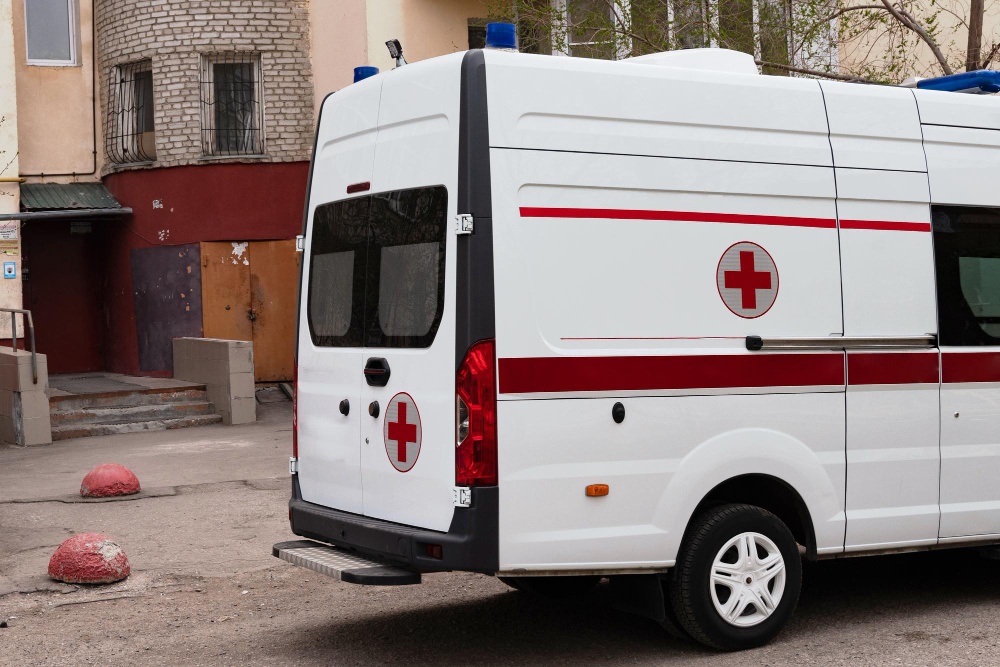Difference Between Ambulette and Ambulance: A Complete Guide
Understanding the differences between an ambulance and an ambulette can help you make the right choi...
Created by: Daniel Ogunsemowo /
Vetted by:
Otse Amorighoye

Introduction: Understanding Non-Emergency and Emergency Transportation
In times of health needs, choosing the right medical transportation service is crucial. Whether you need a ride to a medical appointment or require immediate assistance, knowing the difference between ambulette and ambulance services can make all the difference. At DreamCareRides, we understand that selecting the right option can be confusing, especially under stressful circumstances. If you’re not sure which service to call, this guide will clarify the distinctions to help you make the best decision.
What is an Ambulance?
An ambulance is a specially equipped vehicle designed to provide emergency medical transportation for individuals who require immediate care. Often staffed by highly trained medical personnel such as paramedics and EMTs, ambulances are intended for urgent situations, like heart attacks, strokes, or severe injuries, where life-saving measures may be necessary during transport. Ambulances are fitted with equipment like oxygen, defibrillators, and monitors to stabilize patients en route to the hospital.
What is an Ambulette?
An ambulette is a non-emergency medical transport vehicle specifically designed for individuals who may need assistance getting to a healthcare facility but do not require urgent medical care. Ambulettes are often used by people with limited mobility, such as the elderly or disabled, and they’re typically staffed by drivers trained in basic assistance rather than advanced medical intervention. These vehicles can accommodate wheelchairs, walkers, and other mobility aids and focus on comfort and accessibility.
Key Differences Between Ambulance and Ambulette Services
1. Services Provided
Ambulance Services
Ambulances are built for emergency situations where a patient’s life could be at immediate risk. These services are highly equipped to stabilize and treat patients during transit, making them indispensable in emergency healthcare. Advanced Life Support (ALS) and Basic Life Support (BLS) ambulances are common, offering a range of in-transit care.
Ambulette Services
Ambulettes, on the other hand, cater to non-emergency needs. The services provided by ambulettes are focused on safe, comfortable transport for routine appointments or hospital discharges rather than immediate medical intervention. Staff members assist with getting patients into and out of the vehicle but do not provide medical care during transit.
2. Equipment and Medical Personnel Differences
Ambulance Equipment
Ambulances are equipped with life-saving medical equipment such as:
Defibrillators
Oxygen tanks and masks
Medication kits
Heart monitors
Advanced airway management tools
Ambulances are typically staffed by Emergency Medical Technicians (EMTs) and Paramedics trained to manage life-threatening situations and administer emergency care.
Ambulette Equipment
Ambulettes lack medical equipment typically found in ambulances. Instead, they are equipped with ramps, wheelchair lifts, and harnesses to ensure the safety and comfort of passengers who may need help moving around. The personnel in ambulettes are trained to assist with wheelchair handling and general transport support, but they don’t administer medical care.
3. Cost and Insurance Considerations
Ambulance Costs
Emergency ambulance services can be costly, especially in the U.S. According to recent studies, a typical ambulance trip costs anywhere from $500 to $2,000 or more depending on the level of care provided. Insurance coverage varies greatly and is often limited to emergency situations; in non-emergency scenarios, costs might not be covered.
Ambulette Costs
Ambulettes are a more affordable option for non-emergency medical transport. Since they do not require advanced medical equipment or personnel, the costs range from $50 to $150 on average per trip, which is significantly lower than ambulance services. Many health insurance plans also cover ambulette services for routine medical visits, provided they are deemed medically necessary.
4. When to Use Each Service
When to Use an Ambulance
In the event of a medical emergency, such as a heart attack, stroke, severe bleeding, or breathing difficulty.
If the patient requires immediate medical attention and monitoring en route to a hospital.
When stabilization or life-saving measures may be needed before arrival at a medical facility.
When to Use an Ambulette
For non-emergency medical appointments like routine checkups, physical therapy, or dialysis.
When transportation support is needed due to mobility issues or disabilities.
For patients who may need assistance with wheelchairs or walkers but do not require medical intervention during transport.
Conclusion: Choosing the Right Service
Understanding the differences between an ambulance and an ambulette can help you make the right choice. If a loved one needs emergency attention, call an ambulance. For non-emergency needs, such as appointments or hospital discharge, an ambulette provides an affordable, convenient solution that prioritizes accessibility.
Contact DreamCareRides Today
For reliable non-emergency medical transportation, DreamCareRides is here to help. Whether you need a safe ride to a medical appointment or comfortable support for loved ones with mobility issues, contact us at +1 708 505 6994 To Book Your Ride and learn more about our ambulette services. Our team is dedicated to providing convenient, compassionate transport tailored to your needs.
Frequently Asked Questions (FAQs)
1. Can I call an ambulette in an emergency?
No, ambulettes are not designed or equipped for emergency medical situations. If there is a medical emergency, call an ambulance to ensure access to life-saving equipment and trained medical personnel.
2. Are ambulette services covered by insurance?
Yes, many insurance plans cover ambulette services for non-emergency medical transport if it’s deemed medically necessary. However, it’s best to check with your insurance provider to confirm specific coverage.
3. What kind of assistance does an ambulette provide?
Ambulettes offer support for individuals with mobility limitations, including wheelchair access, ramps, and staff assistance. They ensure safe and comfortable transport but do not provide medical care.
4. Do ambulances transport patients long distances?
Yes, ambulances can transport patients over long distances when required, especially if the patient needs ongoing medical monitoring. However, for routine transfers over long distances, ambulette services are often more cost-effective.
5. How do I decide between an ambulance and an ambulette?
If a patient is experiencing a medical emergency, an ambulance is essential. For non-emergency transport, such as medical appointments, an ambulette is a more affordable and suitable option.
Related Articles
Incorporating NEMT into Hospital Policies: A Guide for Medical Administrators
Dating Someone in a Wheelchair: Tips for Navigating Relationships with Empathy & Inclusivity
Recent blog posts

Daniel Ogunsemowo
Nov 08, 2024
Medical Transportation
7 Things to Consider Before Booking NEMT for Dialysis Appointments
When it comes to dialysis treatment, transportation is essential. ...

Daniel Ogunsemowo
Nov 08, 2024
Medical Transportation
How NEMT Supports Post-Surgery Care
Post-surgery recovery often demands strict adherence to healthcare schedules for follow-up visits, p ...

Daniel Ogunsemowo
Nov 07, 2024
Medical Transportation
10 Illinois Medicaid Transportation Providers: Top Choices for NEMT Services
In Illinois, access to healthcare depends on the availability of reliable transportation for Medicai ...

Adeshola Bello
Nov 04, 2024
Medical Transportation
Essential Airport Transportation Tips for Disabled Travelers
Traveling can be an exciting adventure, but for disabled travelers, it often comes with unique chall ...

Daniel Ogunsemowo
Nov 04, 2024
Medical Transportation
Ensuring On-Time Medical Appointments for Chicago Patients with DreamCareRides
Every year, thousands of Chicago patients face the challenge of reaching their medical appointments ...

Daniel Ogunsemowo
Nov 04, 2024
Medical Transportation
10 Meaningful Ways to Spend Quality Time with Your Grandparents During Christmas
The holiday season is the perfect time to create lasting memories with your loved ones, especially g ...